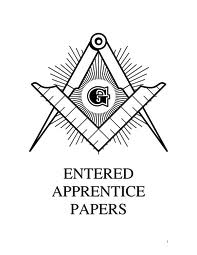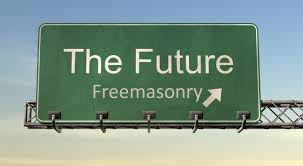CONCLUSION
By: H.L. Haywood
 The Hour Glass. In writing of Masons’ Marks, Brother Gould notes that one of the commonest has ever been the figure of an Hour Glass. “The Hour Glass form, very slightly modified, has been used in every age down to the present, and in almost every country. According to some good authorities, it was a custom (at the period immediately preceding the era of Grand Lodges) to inter an Hour Glass with the dead, as an emblem of the sands of life having run out.” What could more clearly prove the hold which this simple but eloquent symbol has ever had on the imagination of man? “The sands of life! they are swiftly running away. Be up, mortal, and about your task. Soon the night cometh when no man can work. In the grave man will seek him out no more inventions; what you do you must do while it is still called To-day!” Such is the message of the Hour Glass, too simple to need any interpreter. He who has learned how to transform time into life, and how to make the years leave behind them that which perishes not, who lives the Eternal Life in the midst of time—such a one has learned the lesson of the Glass.
The Hour Glass. In writing of Masons’ Marks, Brother Gould notes that one of the commonest has ever been the figure of an Hour Glass. “The Hour Glass form, very slightly modified, has been used in every age down to the present, and in almost every country. According to some good authorities, it was a custom (at the period immediately preceding the era of Grand Lodges) to inter an Hour Glass with the dead, as an emblem of the sands of life having run out.” What could more clearly prove the hold which this simple but eloquent symbol has ever had on the imagination of man? “The sands of life! they are swiftly running away. Be up, mortal, and about your task. Soon the night cometh when no man can work. In the grave man will seek him out no more inventions; what you do you must do while it is still called To-day!” Such is the message of the Hour Glass, too simple to need any interpreter. He who has learned how to transform time into life, and how to make the years leave behind them that which perishes not, who lives the Eternal Life in the midst of time—such a one has learned the lesson of the Glass.
 The Scythe. If the Hour Glass is the symbol of the fleetingness of a mortal life in which all do fade as Both the leaf, in which the sands are ever running out, the Scythe is the figure of Time which is itself that stream in which the sands are borne along. Time! What a mighty theme! The libraries of the world could not hold the books that might be written about this eternally fascinating, eternally elusive mystery! So infinite are the suggestions of one small symbol in Masonry’s House of Doctrine.
The Scythe. If the Hour Glass is the symbol of the fleetingness of a mortal life in which all do fade as Both the leaf, in which the sands are ever running out, the Scythe is the figure of Time which is itself that stream in which the sands are borne along. Time! What a mighty theme! The libraries of the world could not hold the books that might be written about this eternally fascinating, eternally elusive mystery! So infinite are the suggestions of one small symbol in Masonry’s House of Doctrine.
 Time is ever with us, flowing through our minds as the blood courses through our veins, yet does it mystify us; and the more thinking we do about it the more mysterious does it become. We divide it into Past, Present, and Future. But what is the Past? Has it ceased to exist? If so, why does it continue to influence us? If it continues to exist why do we call it the Past? What is the Future? Is it something already made, awaiting us Out There as the land waits for its explorer? What is the Present? We feel that it exists, yet it eludes us. Before I have said “Now” it is still future; the moment I have said it, it belongs to the past. How can one’s mind lay hold of that which is always becoming but never is? If one’s mind can not apprehend it, how can it be said to exist? It is such puzzles as these that have led our most opulent minds to despair of ever surprising its secret from Time.
Time is ever with us, flowing through our minds as the blood courses through our veins, yet does it mystify us; and the more thinking we do about it the more mysterious does it become. We divide it into Past, Present, and Future. But what is the Past? Has it ceased to exist? If so, why does it continue to influence us? If it continues to exist why do we call it the Past? What is the Future? Is it something already made, awaiting us Out There as the land waits for its explorer? What is the Present? We feel that it exists, yet it eludes us. Before I have said “Now” it is still future; the moment I have said it, it belongs to the past. How can one’s mind lay hold of that which is always becoming but never is? If one’s mind can not apprehend it, how can it be said to exist? It is such puzzles as these that have led our most opulent minds to despair of ever surprising its secret from Time.
Nevertheless, Time is here, a part of the scheme of things, for good or for bale; indeed, it seems to be the very stuff of life itself, as Bergson has argued so brilliantly in his “Creative Evolution.” Existence itself is a process of duration and man begins to die the moment he is born.
The stately solemn words of the Lecture, offered in elucidation of the symbol, leave the mind saddened and weighted with a sense of the frailty, or even futility, of life. William Morris, who is in so many ways the poet of architecture, felt in the same way about it. All through his pages one feels its presence like a shadow against which life’s little events become etched into brighter relief, so that the little amenities of the day become all the dearer in that they flutter with such fragility over the abyss of eternity, all the more precious because “the sweet days die.”
But there is no need that we be shadowed by the sad-sweetness of this melancholy. Time is a part of the scheme of things, it is the very form of life, so that he who accepts life must also accept Time and look upon it as friend and ally rather than enemy. Time helps to solve our problems, assuages our griefs, and always carries us farther into the strange adventure of existence. The most triumphant minds have trusted themselves to it, as a child to its mother, learning how to transform it into ever richer life, not lamenting the past, nor impatient for the future, but living in an Eternal Now which must be such Time as heaven knows. “Man postpones or remembers,” complains Emerson; “he does not live in the present, but with reverted eye laments the past, or, heedless of the riches which surround him, stands on tiptoe to foresee the future. He cannot be happy and strong until he too lives with Nature in the present above time!
“Great souls live many an eon in Man’s brief years, To him who dreads no spite of Fate or Chance,
Yet loves the Earth, and Man, and starry spheres, Life’s swiftness is the pulse of life’s romance;
And when the footsteps fall of Death’s advance,
He hears the feet; he quails not, but he hears.”
It is above all things fitting that the Ritual which began with the candidate’s birth into the world of the lodge should end by bringing him to that death which is but a larger birth into the Grand Lodge above; thus does our sublime symbolism, like the sky, gather all things into its embrace and over-arch the end as well as the beginning. So also is it fitting that the Ritual should throw about the instruments and trappings of the grave the memories of the slain Master, thus reminding us that death may be transfigured by a great soul into a pæan and a triumph.

To die is as natural as to be born. Death is no interloper in the universe, but at one with its laws and its life; in truth, it is itself the friend and servant of life in that it keeps fresh the stream and removes the outworn and the old “lest one good custom should corrupt the world.” The very act of death proves this, for, however much we shrink from its approach, we yield peacefully to it when it comes. Of this all our physicians testify, as witness these words from one of the noblest of them, Dr. Osier
“I have careful notes of about five hundred death beds, studied particularly with reference to the modes of death and the sensations of the dying. Ninety suffered bodily pain or distress of one sort or another; eleven showed mental apprehension; two positive terror; one expressed spiritual exaltation; one bitter remorse. The great majority gave no sign one way or another; like their birth their death was a sleep and a forgetting.”
Natural as it is, however, death will ever remain solemn, and even sad, not only because of what comes after, or “because of the body’s masterful negation,” but because, as the Lecture reminds us, the day of death is a kind of judgment day, for it brings to an end and sets a lasting seal upon the life of a man. The world with its problems, its imperious needs, its grey tragedies, and ancient heartbreaks, is left behind; the man’s career is ended, and the influences of his life, the harvest of his deeds—all these are now taken from his control. What he has done he has done, and death places it beyond his changing. Surely, it must be an awful thing for a human being to realize at the last that, so far as he has been concerned, there is less happiness, less love, less kindliness and honor among men than before he entered life. To so live in the midst of this mystery-haunted world, to so work among the winged days that little children may be happier, youth more joyous, manhood more clean, and old age less lonely; to so live that men will hate less and love more, be honorable in public dealings as in private acts, create more than destroy; to so live that the great Kingdom of Brotherhood may be brought near and man be bound closer to man, and woman closer to woman; that it is to be a Mason!






You must log in to post a comment.